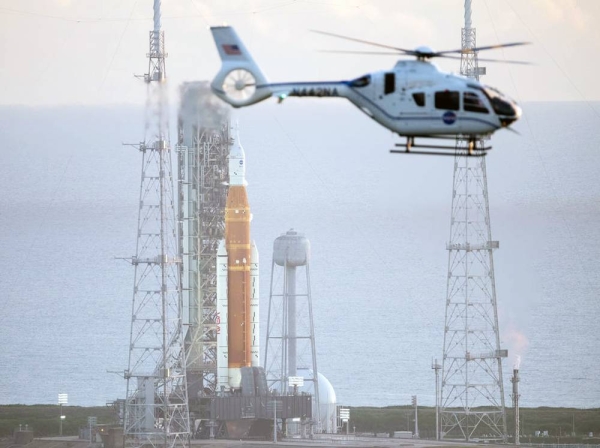
HOUSTON — NASA, with its plan to send an unmanned space capsule into the moon’s orbit scrubbed on Aug, 29 due to engine issues, said the next attempt will occur on Saturday (Sept. 3).
NASA officials said the Artemis I new launch date that was initially scheduled for Friday had to be moved due to bad weather. The weather is 60% no go for Friday but looks to be more favorable Saturday.
NASA marking the initial launch in an ambitious plan to establish a long-term presence on the moon for scientific discovery and economic development, said that the space capsule, called Artemis I, will travel for roughly 40 days — reaching as close as 60 miles from the moon, and then 40,000 miles above the moon when orbiting over its dark side — before landing in the Pacific Ocean off the coast of San Diego.
"Looking forward to Saturday, weather would be a little bit different than what we experienced yesterday," Mark Berger, launch weather officer with the US Space Force's 45th Weather Squadron, said during a media briefing Tuesday.
"We will have a fairly strong onshore flow, and so that does favor showers and possibly a few thunderstorms moving in from the coast during the morning and early afternoon hours."
He added, "I'm optimistic that we'll have at least some clear air to work with during the afternoon to count on Saturday." The window for launch on Saturday kicks off at 2:17 p.m. ET and ends at 4:17 p.m. ET. If need be, the launch can be pushed back to Monday.
If the launch does not occur by Monday, Artemis I will have to roll back to the Vehicle Assembly Building and won’t be able to launch until later in September. This is because the flight termination batteries, which allow Artemis to be blown up if it veers off course, run low after 25 days.
Mission managers met Tuesday to discuss data and develop a forward plan to address issues that arose during an Aug. 29 launch attempt for the flight test.
During that launch attempt, engineering teams were not able to chill down the four RS-25 engines to approximately minus 420 degrees F. In particular, engine 3 showed higher temperatures than the other engines.
Teams also saw a hydrogen leak on a component of the tail service mast umbilical quick disconnect, called the purge can. They managed the leak by manually adjusting propellant flow rates.
In the coming days, teams will modify and practice propellant loading procedures to follow a procedure similar to what was successfully performed during the Green Run at NASA’s Stennis Space Center in Mississippi.
The updated procedures would perform the chill down test of the engines, also called the kickstart bleed test, about 30 to 45 minutes earlier in the countdown. This would be during the liquid hydrogen fast fill liquid phase for the core stage.
NASA’s new deep-space rocket, the Space Launch System (SLS), will launch missions powered by four RS-25 engines, reliable engines used for 135 shuttle missions. The engines have been upgraded with new controllers and other features for SLS. Each engine has a unique number that allows engineers to track its flight history.
In addition, teams are configuring platforms at Launch Pad 39B to enable engineers access to the purge can on the tail service mast umbilical. Once access is established, technicians will perform assessments and torque connection points where necessary.
Meteorologists with the US Space Force Space Launch Delta 45 predict favorable weather conditions for Saturday. Although rain showers are expected, they are predicted to be sporadic during the launch window.
The mission management team plans to reconvene on Thursday to review data and overall readiness. — Agencies